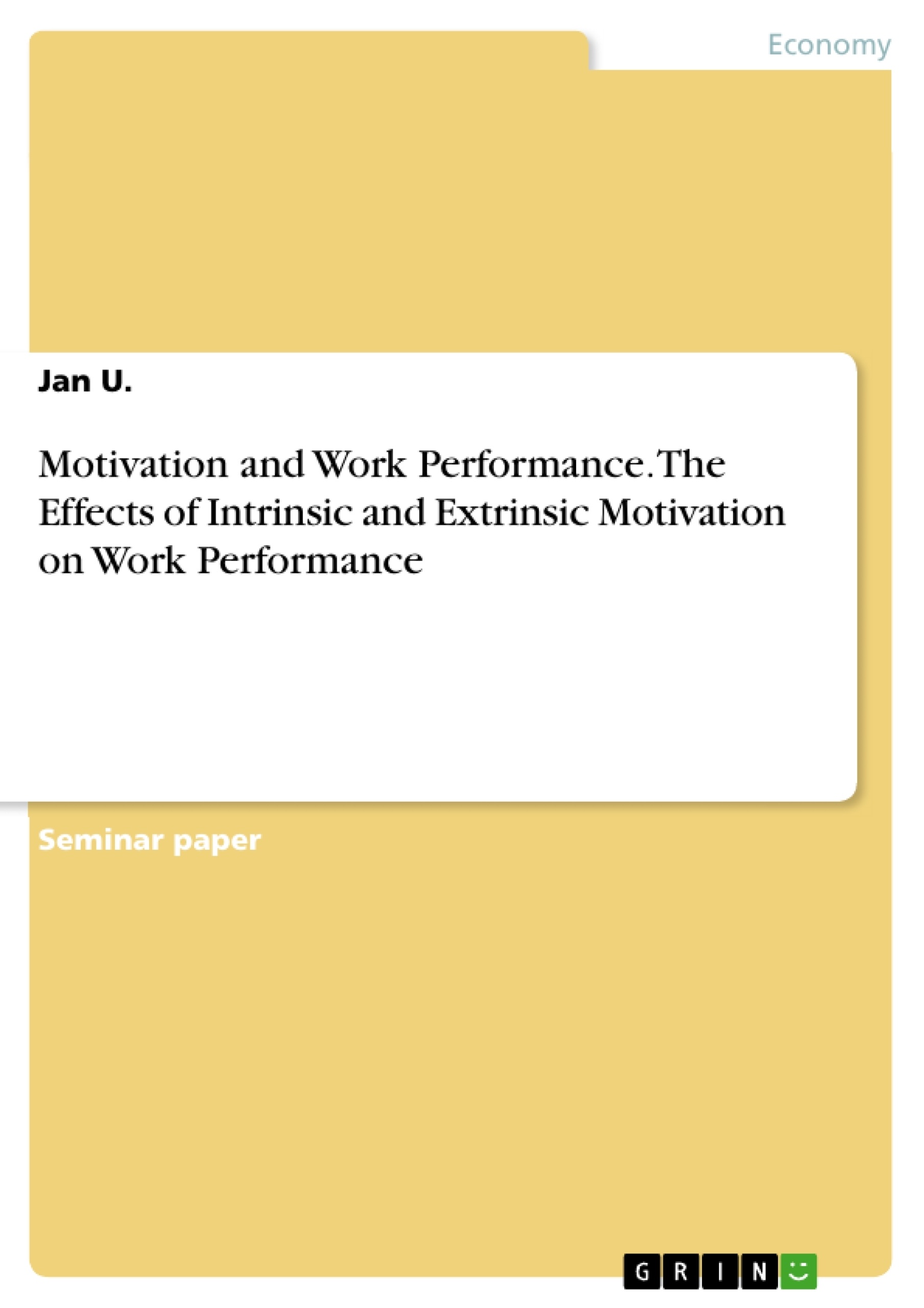The purpose of this paper is to investigate the effects of intrinsic and extrinsic motivation on work performance within the R&D environment and provide practical recommendations. Substantial research has been conducted to investigate the construct of motivation and to validate its impact on core business outcomes within varying environments. According to Rani and Lenka (2012), the motivational process affects an individual’s strength and persistence of behaviour. Thus, motivated individuals are activated to behave in a more creative, productive and persistent way. Prevailing literature validates this positive effect. For example, Deci and Ryan (2008a) argue that there is a significant link between motivation and positive work-related outcomes, such as psychological well-being and work performance.
Considering this convincing evidence, further research tried to investigate this relationship within varying settings. An area that has aroused major attention is the R&D environment. Within this context managers face several obstacles in establishing high levels of motivation. Clarke (2002) mentions, for example, the differing values and expectations of R&D specialists, the uncertainty of outcomes and the difficulty in measuring the results. For high levels of motivation and performance to occur, managers need to respond to the needs of the R&D professionals without losing sight of the company’s major objectives. Based on the work of Deci, Vallerand, Pelletier and Ryan (1991) and their distinction between intrinsic and extrinsic motivation, studies in the R&D management literature validate the importance of both motivational constructs within this context.
However, in practice, organizations like BMW may be incentivized to primarily focus on extrinsic rewards. Extrinsic incentive systems, such as salary increases or bonuses, can easily be established, fairly measured and provide a clear link between the employees’ monetary motives and the organizations objectives. Further, intrinsic motivation may be neglected due to difficulties and increased efforts of implementing such incentives. As a result of this neglect of their workers' intrinsic needs and desires, the motivation within the R&D department and in turn the work performance may decline.
Table of Contents
- 1. Status quo
- 2. Theoretical Framework and Core Constructs
- 2.1. Self-Determination Theory
- 2.2. Intrinsic Motivation
- 2.3. Extrinsic Motivation
- 2.4. Work Performance
- 3. Evidence
- 3.1. The Effect of Intrinsic Motivation on Work Performance
- 3.2. The Effect of Extrinsic Motivation on Work Performance
- 3.3. The Interaction Effect and the Joint Impact on Work Performance
- 3.4. Related Constructs
- 4. Recommendations
- 4.1. Intrinsic Incentives
- 4.2. Extrinsic Incentives
Objectives and Key Themes
This paper aims to investigate the effects of intrinsic and extrinsic motivation on work performance within the R&D environment and to provide practical recommendations for BMW. It focuses on clarifying the relationship between intrinsic and extrinsic motivation, as well as their interaction on work performance.
- The impact of intrinsic motivation on work performance
- The impact of extrinsic motivation on work performance
- The interaction effect of intrinsic and extrinsic motivation on work performance
- The role of the Self-Determination Theory in explaining motivation
- Practical recommendations for motivating R&D professionals within BMW.
Chapter Summaries
The paper begins by discussing the status quo of research on motivation and its impact on work performance. It highlights the existing literature on the topic, including the importance of motivation in driving creativity, productivity, and persistence. The paper then delves into the theoretical framework, focusing on the Self-Determination Theory (SDT) and its core constructs. The SDT posits that individuals strive to satisfy their basic psychological needs for autonomy, competence, and relatedness, which play a significant role in shaping motivation.
Chapter 2 examines the two main types of motivation: intrinsic and extrinsic motivation. Intrinsic motivation stems from an internal enjoyment of the activity itself, while extrinsic motivation arises from external rewards or pressures. The paper explores the various types of extrinsic motivation and their potential to become more autonomous through internalization and integration.
Chapter 3 analyzes the effects of both intrinsic and extrinsic motivation on work performance. It investigates the relationship between each type of motivation and performance, exploring both the positive and negative effects of each. The paper also explores the interaction effect between the two types of motivation and the potential impact on work performance.
Finally, the paper concludes by providing practical recommendations for motivating R&D professionals within BMW. It suggests strategies for enhancing both intrinsic and extrinsic incentives within the workplace to foster a more motivating environment.
Keywords
This paper explores the relationship between motivation and work performance, focusing on the concepts of intrinsic and extrinsic motivation within the context of the R&D environment. Key themes include the Self-Determination Theory, autonomy, competence, relatedness, intrinsic need satisfaction, cognitive evaluation theory, and practical recommendations for motivating R&D professionals within the workplace.
- Quote paper
- Jan U. (Author), 2018, Motivation and Work Performance. The Effects of Intrinsic and Extrinsic Motivation on Work Performance, Munich, GRIN Verlag, https://www.grin.com/document/1034849



